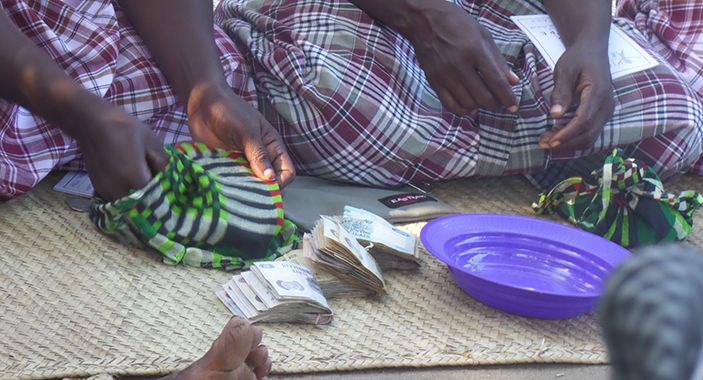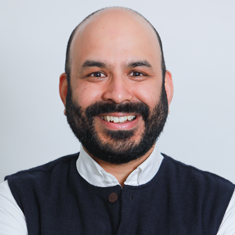At SwitchPoint, a two-day conference organized by Intrahealth International—a DAI strategic affiliate—400 global health and technology devotees came together in the North Carolina countryside to share ideas and seed partnerships for solving global health challenges, especially by using technology. The seventh annual event, held April 26–27, featured 30-plus stage speakers and 20-plus microlabs.
These talks and microlabs covered a host of topics, from pandemic preparedness and the value of community health workers to how health innovators can best engage with investors—and much more. Here are just a few of the stand-out moments:

Giving Sex a Good Name: Youth in India—home to 229 million people between ages 15–24—are interested in sex, and the internet is their top source of information, notes Vithika Yadav, co-founder and head of Love Matters India. Of India’s youth with internet access, she said, 83 percent of those surveyed have watched pornography, which paints an unreal and irresponsible picture of sex. “We have to invest in young people’s health; we need to use technology to give sex a good name,” Yadav said, adding that it is difficult for India’s young to find information on relationships, abstinence, and contraception. “Young people are looking for information about sex online,” she said. “We need to know what is youth-friendly information on sex, and how to help young people find material that resonates with them.”

Start-Ups—Get Funding, Win Prize Money: Bobby Jefferson, pictured above, Chief Technology Officer for DAI Global Health, broke down the many avenues available for people with ideas to pursue financing. Jefferson told the audience that even well-known brands—brands not normally associated with social investment—are investing in people who show promise for delivering breakthrough ideas and thinking. He warned, though, that social investing to date has been heavily skewed and we need more women, people of color, and underserved communities to be recipients of investment funding. “Large companies and other investors increasingly realize they do not have all the answers,” Jefferson said. “Many organizations and individuals are now investing money to unearth new ideas and new energy by sponsoring contests, prizes, and innovation investment funds.”

Follow (Attract?) the Money: This microlab, photo above, featured investors, including DAI’s Chris LeGrand, taking questions from people with business concepts and proposals. “Nonprofits are getting less funding—we need to learn how to raise funding differently, and this is not a bad thing,” said Kafui Prebbie, founder of TechAide in Ghana. TechAide is seeking funding for its latest project, called ASANKA, a device that collects and distributes digital content communally between wireless devices without internet access. “Investors want to see traction—impact and business results to date,” said Diana Ayton-Shenker of The New School. Added Anne Katharine Wales of Medtronic Foundation, “How are you going to build a shared vision so it is not just your thing?”

The One-Dollar, Bacteria-Discovering Microscope: Jim Cybulski and Foldscope Instruments “want communities everywhere in the world to experience science.” The foldable microscope made mostly from paper and $1 in parts zooms to 140X, plus 10X digital zoom with a smart phone. More than 300,000 are deployed throughout the world, enabling schoolchildren to see micro-organisms and serving social purposes such as identifying fake drugs and currency, detecting bacteria in milk and water, and finding the microscopic eggs of agricultural pests. By bringing scientific capabilities to everyday life in remote locales, the foldscope creates openings for mentoring, opportunities for community networking, and platforms for local research and development.

Teaching Next-Gen: “Teachers are force multipliers, impacting every student they teach,” said Julie Keane of Participate, which works to add global views into U.S. curriculum and proposes educating teachers on the Sustainable Development Goals. “When teachers fight for what’s right, kids fight for what’s right. Let’s find a way to make teachers comfortable with [these goals], with education skills that makes sense.”

Knowing What People Will Do: It is not true that “the future belongs to crowds,” as author Don DeLillo wrote in 1991—instead, “it belongs to those who can predict and know what crowds will do,” and is used for both development and destruction, said Nathaniel Raymond of the Harvard Humanitarian Initiative. “We are interested in when and where you do things,” he said, but in light of the recent scrutiny of Facebook, we have to remember the privacy dimension. “Data is about how we establish trust,” he said. “Data is people.”

Competitors Unite for Community Health: “Community health worker programs … remain a good investment, since the alternative in reality is no care at all for the poor living in geographically peripheral areas.” The finding comes from a heralded 1998 World Health Organization report, “and we are writing the same sentence today,” said Madeleine Ballard of the Community Health Impact Coalition. “[Yet] about 1 billion people in the world have never seen a health worker.” Ballard and a team of six organizations that frequently compete against each other recently collaborated to produce a report distilling the secret sauce to optimizing community-led health systems. To summarize, successful community-led systems are:
- Accredited. Local health workers need that are tested and certified.
- Accessible. Avoid point-of-care user fees.
- Proactive. Workers go door to door seeking out the ill and surveilling for outbreaks.
- Continuously trained. Medical education, not one-shot training.
- Dedicated supervisor. To assess work and coach one on one.
- Data feedback loops. Integrate info into public data systems.
- Paid. Poor health workers should not be forced to work for free.
- Part of a strong system. Not operating in a vacuum but joined to a primary care facility and pharmacy.

Measuring the Invisible: A rural mother who cooks, cleans, raises children, cares for elders, collects firewood, and more stands a good chance of going unseen and uncounted even if we’re looking for her, said Nina Rabinovich Blecker of the United Nations Foundation’s Data2X project. Instead, fathers speak for daughters and husbands for wives. “We have a significant gap in data about women and girls,” Blecker told SwitchPoint. “We cannot improve something we are not measuring,” she said, which makes it harder to assist victims of violence, people with special needs, and those who do unpaid work, for example. But high-quality data collection and national debate can drive change, she said, citing the case of Uruguay, which in 2016 launched its National Care Plan. “Unbiased data collection is the goal.”

Ugh–Development Selfies: Photojournalist Trevor Snapp thinks selfies send the wrong message. “We all do these selfies with people from across the tracks,” Snapp said. “It is not accurate. It is becoming, honestly, a kind of embarrassment.” Instead, he suggests supporting local storytellers and learning from them. Supporting events such as the April 2018 Nairobi Tech Week and hackathon, for example, gives Africans an opportunity to be creative and embrace communication technology. “There needs to be collaboration all the time—there is no room for just one person telling the story,” Snapp said.

Softer Collaboration That Points Forward
The only thing being sold at SwitchPoint were T-shirts, healthy food and beverages, ideas, and partnering. Event organizer and lead sponsor IntraHealth displayed no signage. Attendees in casual dress enjoyed intergenerational collaboration and intellectual stimulation against a backdrop of performance art and live music. Packed comfortably into an old cotton mill-turned-concert-hall attached to a general store and microbrewery along the Haw River—SwitchPoint attendees and presenters shared ideas freely between activities.
The SwitchPoint effect can be [inspiring] (https://dai-global-digital.com/a-do-no-harm-framework-for-ict4d-inspiration-from-switchpoint-2018.html). The ultimate results, let’s hope, will be inspiration turned into action.




